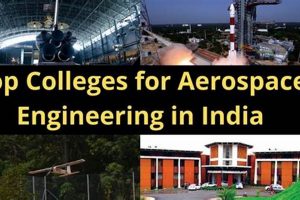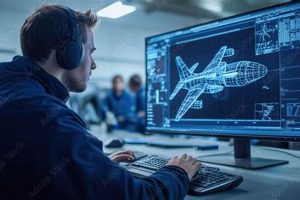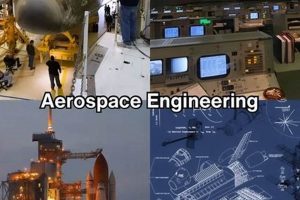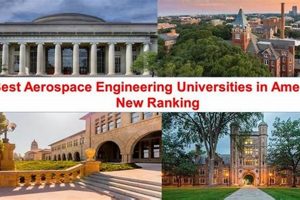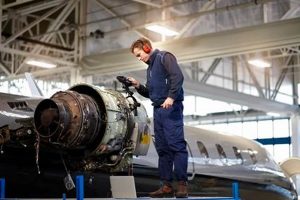The evolution of flight and space exploration is a complex narrative, tracing from initial theoretical concepts and rudimentary experiments to the sophisticated technological achievements of the present day. This field encompasses the design, development, testing, and production of aircraft and spacecraft, pushing the boundaries of what is aerodynamically and physically possible. Early attempts at flight, often based on observation of birds and other flying animals, laid the groundwork for scientific inquiry into lift, drag, and propulsion.
Understanding the trajectory of this discipline provides crucial context for contemporary innovations. It highlights the cumulative nature of scientific progress, where each breakthrough builds upon the foundation laid by previous generations of engineers and scientists. The historical development of this field also illustrates the powerful interplay between theoretical advancements and practical applications. Furthermore, it emphasizes the role of major historical events, such as wars and space races, in accelerating research and development and fostering global collaboration.
The subsequent sections will delve into key milestones, pivotal figures, and technological advancements that have shaped the field, outlining the progression from early ballooning and powered flight to the exploration of outer space and the development of advanced aircraft technologies.
Comprehending the historical context of aerospace engineering enriches understanding and provides valuable perspective. Consider these strategies to enhance the learning process:
Tip 1: Establish a Chronological Framework: Construct a timeline of major events, from early aeronautical experiments to contemporary space missions. This provides a structural foundation for integrating details.
Tip 2: Identify Key Figures and Their Contributions: Research influential individuals such as the Wright brothers, Robert Goddard, and Wernher von Braun. Understanding their motivations and innovations clarifies historical developments.
Tip 3: Analyze Technological Advancements: Investigate the evolution of key technologies like propulsion systems, materials science, and avionics. Trace the development of each from its inception to current applications.
Tip 4: Examine the Impact of Historical Events: Consider the impact of events such as World War II and the Cold War on aerospace development. Understand how these events stimulated innovation and shaped the field’s direction.
Tip 5: Explore the Interdisciplinary Nature of the Field: Recognize that aerospace engineering draws upon diverse disciplines, including physics, mathematics, computer science, and materials science. Acknowledge the interconnectedness of these fields.
Tip 6: Utilize Primary Sources: When possible, consult original documents, such as technical reports, patents, and personal accounts. These provide firsthand insights into the challenges and triumphs of the past.
Tip 7: Consider Ethical Implications: Reflect on the ethical considerations associated with aerospace technology, including environmental impact and the use of these technologies in warfare.
By systematically exploring significant events, individuals, and technological advancements, a deeper understanding of the complex historical development of aerospace engineering emerges. This contextual understanding enhances the appreciation for contemporary challenges and future possibilities.
The following sections will further explore specific aspects and advancements within this multifaceted field.
1. Early Flight Theories
Early flight theories represent the conceptual genesis of aerospace engineering. These initial explorations into the principles of flight, though often lacking empirical validation, established the foundational framework for subsequent scientific inquiry and technological development. Their study reveals how nascent ideas gradually evolved into the sophisticated engineering practices of today.
- Da Vinci’s Ornithopter Concepts
Leonardo da Vinci’s sketches and designs for ornithopters, machines intended to fly by mimicking the flapping wings of birds, stand as a seminal example. While never successfully realized in his time, his work demonstrates an early understanding of aerodynamic principles and a commitment to studying natural flight. These concepts, though impractical in their original form, inspired generations of engineers and scientists, demonstrating the importance of theoretical exploration in shaping the future of the field.
- The Development of Aerodynamic Principles
Early theorists, such as George Cayley, began to identify and articulate fundamental aerodynamic principles, including lift, drag, and thrust. Cayley’s work, which included the design and construction of gliders, marked a significant shift from mere observation to systematic experimentation. His contributions provided a scientific basis for understanding flight, paving the way for more sophisticated engineering designs.
- The Role of Kites in Aerodynamic Experimentation
Kites, with their inherent ability to generate lift and maintain stable flight, served as valuable tools for early aerodynamic experimentation. Researchers used kites to investigate the effects of different wing shapes, angles of attack, and control surfaces. These experiments provided practical insights into the principles of flight, informing the design of early aircraft. The relatively simple and inexpensive nature of kites made them accessible tools for scientific inquiry, democratizing the study of aerodynamics.
- The Influence of Balloons and Airships
The development of balloons and airships represented a significant step toward controlled flight. While these lighter-than-air craft relied on buoyancy rather than aerodynamic lift, they provided valuable experience in navigation and control. The challenges encountered in designing and operating these craft spurred innovation in areas such as propulsion, materials science, and meteorological understanding, contributing to the broader development of aerospace technology.
These early flight theories, though often imperfect and incomplete, were crucial in laying the groundwork for the development of aerospace engineering. They exemplify the iterative nature of scientific progress, where initial conceptualizations are refined through experimentation, observation, and theoretical analysis. The legacy of these early pioneers continues to inspire innovation in the field, demonstrating the enduring importance of fundamental research in pushing the boundaries of what is possible.
2. Propulsion System Development
The history of aerospace engineering is inextricably linked to propulsion system development. Effective and efficient propulsion is a sine qua non for both atmospheric and space flight. The evolution of aircraft and spacecraft capabilities is directly proportional to the advancements in their respective propulsion systems. From rudimentary internal combustion engines powering early aircraft to complex rocket engines enabling space exploration, each technological leap in propulsion has expanded the realm of the possible in flight and space travel.
Early aircraft, exemplified by the Wright brothers’ Flyer, relied on relatively simple internal combustion engines. These engines, while groundbreaking for their time, were limited in power output and efficiency. Subsequent improvements in engine design, including increased compression ratios and the introduction of supercharging, led to significant gains in aircraft performance during the early to mid-20th century. The advent of the jet engine, pioneered by figures such as Frank Whittle and Hans von Ohain, revolutionized air travel, allowing for significantly higher speeds and altitudes. The development of rocket engines, spearheaded by Robert Goddard and later Wernher von Braun, was essential for the exploration of space. These engines, utilizing liquid or solid propellants, provided the thrust necessary to overcome Earth’s gravity and travel to other celestial bodies. Today, research continues on advanced propulsion concepts such as scramjets, ion drives, and nuclear propulsion, aiming to further extend the boundaries of aerospace capabilities.
In summary, the trajectory of aerospace engineering is intrinsically tied to advances in propulsion technology. Each new propulsion system unlocks new possibilities, driving innovation in aircraft and spacecraft design, and enabling increasingly ambitious missions. The ongoing pursuit of more efficient, powerful, and reliable propulsion systems remains a central focus of aerospace engineering, underscoring its foundational importance to the field.
3. Materials Science Innovation
Materials science innovation constitutes a critical thread in the historical tapestry of aerospace engineering. The advancement of aircraft and spacecraft capabilities is fundamentally intertwined with the development of new materials that exhibit superior strength-to-weight ratios, thermal resistance, and durability. The pursuit of enhanced performance has continually driven the need for novel materials, shaping the evolution of aerospace design and engineering practices.
- The Transition from Wood and Fabric to Metals
Early aircraft predominantly relied on wood and fabric for their construction. While lightweight, these materials possessed inherent limitations in strength, durability, and resistance to environmental factors. The shift to metals, particularly aluminum alloys, marked a significant turning point. Aluminum offered improved strength-to-weight ratios and enhanced resistance to corrosion, enabling the design of larger, faster, and more durable aircraft. This transition illustrates the direct correlation between materials science advancements and the increased operational capabilities of aerospace vehicles.
- The Development of High-Temperature Alloys
The advent of jet propulsion necessitated the development of materials capable of withstanding extreme temperatures. Nickel-based superalloys emerged as critical components in jet engine turbines, allowing for higher operating temperatures and improved engine efficiency. These alloys, engineered with precise compositions and microstructures, demonstrate the importance of materials science in enabling technological breakthroughs in propulsion systems. The continuous refinement of high-temperature alloys remains a crucial area of research for improving the performance of modern jet engines and rocket engines.
- The Introduction of Composite Materials
Composite materials, such as carbon fiber reinforced polymers, offer exceptional strength-to-weight ratios and can be tailored to meet specific design requirements. These materials have become increasingly prevalent in aerospace structures, reducing weight and improving fuel efficiency. The adoption of composites represents a paradigm shift in aerospace manufacturing, enabling the creation of more aerodynamic and structurally efficient designs. Furthermore, composite materials offer advantages in terms of corrosion resistance and fatigue life, contributing to the overall durability and longevity of aerospace vehicles.
- Advancements in Thermal Protection Systems
Spacecraft re-entering the Earth’s atmosphere encounter extreme heat due to atmospheric friction. The development of effective thermal protection systems (TPS) is essential for safeguarding spacecraft and their occupants. Materials such as ceramic tiles and ablative heat shields are designed to dissipate heat and prevent structural damage. The design and implementation of TPS represent a complex engineering challenge, requiring a deep understanding of materials science, heat transfer, and aerodynamics. The evolution of TPS has been critical in enabling the safe and successful return of spacecraft from orbital missions.
In conclusion, the ongoing advancements in materials science are integral to the advancement of aerospace engineering. The pursuit of materials with superior properties continues to drive innovation in aircraft and spacecraft design, enabling the creation of more efficient, durable, and capable aerospace vehicles. From the transition to metals to the development of composite materials and advanced thermal protection systems, materials science innovation has consistently expanded the possibilities of flight and space exploration.
4. Aircraft Design Evolution
The progression of aircraft design forms a core narrative within the broader history of aerospace engineering. Each iteration in aircraft configuration, materials, and systems reflects advancements in scientific understanding, technological capability, and operational demands. The evolution of aircraft design is not a linear process; rather, it is a series of adaptations and innovations driven by specific needs and constraints. Examining these design changes provides insight into the challenges faced by engineers throughout history and the creative solutions they devised.
Early aircraft, such as the Wright Flyer, were characterized by their fragile construction, limited control surfaces, and rudimentary engines. These designs prioritized achieving powered flight, with less emphasis on stability, efficiency, or payload capacity. Subsequent developments, spurred by World War I, led to the refinement of aerodynamic profiles, the adoption of more powerful engines, and the introduction of metal structures. The interwar period saw the emergence of streamlined designs, cantilevered wings, and retractable landing gear, all contributing to improved performance and fuel efficiency. The jet age ushered in a new era of aircraft design, characterized by swept wings, high-bypass turbofan engines, and sophisticated avionics systems. These advancements enabled commercial aviation to become a global phenomenon. Modern aircraft design continues to evolve, focusing on fuel efficiency, reduced emissions, increased passenger comfort, and enhanced safety. The development of unmanned aerial vehicles (UAVs) has also expanded the scope of aircraft design, requiring innovative solutions for autonomous flight, sensor integration, and mission-specific payloads.
Understanding the historical trajectory of aircraft design offers valuable lessons for contemporary engineers. It highlights the importance of iterative design processes, the need for continuous innovation, and the ability to adapt to changing requirements. By studying the successes and failures of past designs, engineers can gain a deeper appreciation for the complex interplay of factors that influence aircraft performance and safety. Furthermore, an understanding of aircraft design evolution fosters a broader perspective on the potential for future advancements in the field, encouraging the exploration of novel concepts and technologies.
5. Space Exploration Milestones
Space exploration milestones constitute defining moments in the history of aerospace engineering, demonstrating the field’s ambition and technological prowess. These achievements, ranging from the first artificial satellite to crewed lunar landings, represent the culmination of scientific knowledge, engineering ingenuity, and a willingness to push the boundaries of human endeavor. Examining these milestones reveals the evolving capabilities and the enduring pursuit of expanding human presence beyond Earth.
- The Launch of Sputnik 1 (1957)
The launch of Sputnik 1, the first artificial satellite, marked the dawn of the space age and triggered a period of intense competition and innovation. This event spurred significant investment in aerospace research and development, accelerating advancements in rocket technology, satellite communications, and space tracking. Sputnik 1 demonstrated the feasibility of orbital spaceflight, fundamentally altering the geopolitical landscape and influencing the direction of aerospace engineering for decades to come.
- The First Human in Space: Yuri Gagarin (1961)
Yuri Gagarin’s orbital flight represented a pivotal moment in human history and a major accomplishment for the Soviet space program. This achievement demonstrated the possibility of human survival and performance in the space environment, necessitating advancements in life support systems, spacecraft design, and astronaut training. Gagarin’s flight galvanized public interest in space exploration and fueled the space race between the United States and the Soviet Union.
- The Apollo 11 Moon Landing (1969)
The Apollo 11 Moon landing stands as a defining achievement in aerospace engineering and human exploration. This mission demonstrated the capability to transport humans to another celestial body, conduct scientific research, and return safely to Earth. The Apollo program necessitated advancements in rocketry, navigation, materials science, and communications technology, pushing the boundaries of engineering expertise and inspiring a generation of scientists and engineers.
- The Development of the Space Shuttle Program (1981-2011)
The Space Shuttle program represented a significant departure from previous spacecraft designs, offering reusable access to space for a variety of missions, including satellite deployment, scientific research, and the construction of the International Space Station. The Space Shuttle program pushed the boundaries of aerospace engineering, requiring complex thermal protection systems, advanced flight control systems, and extensive mission planning. Despite its successes, the program also faced challenges, including high operating costs and safety concerns, highlighting the inherent risks and complexities of human spaceflight.
These milestones, while diverse in their objectives and technological approaches, collectively illustrate the progress and challenges within aerospace engineering. Each achievement has not only expanded human knowledge and capabilities but also has inspired further innovation and exploration. By examining these moments, a deeper appreciation for the dynamic interplay between engineering innovation, scientific discovery, and the enduring human desire to explore the universe emerges.
Frequently Asked Questions
This section addresses common inquiries regarding the evolution and development of aerospace engineering as a discipline. The answers provided aim to offer concise and informative insights into the key aspects of its historical trajectory.
Question 1: What are the primary factors that contributed to the initial development of aerospace engineering?
The convergence of theoretical advancements in aerodynamics, the invention of the internal combustion engine, and the societal demand for faster transportation and military applications were primary catalysts. Early experimentation with gliders and powered flight provided a practical foundation for subsequent engineering developments.
Question 2: How did the two World Wars influence the trajectory of aerospace engineering?
Both World War I and World War II served as significant accelerators for aerospace engineering. The urgent need for improved aircraft for reconnaissance, bombing, and air combat spurred rapid innovation in aircraft design, engine technology, and materials science. The wars led to substantial government investment in aerospace research and development, laying the groundwork for post-war advancements.
Question 3: What role did the “Space Race” play in the evolution of aerospace engineering?
The “Space Race” between the United States and the Soviet Union served as a powerful motivator for advancements in rocket technology, spacecraft design, and astronautics. The competition to achieve milestones in space exploration, such as launching the first satellite and landing humans on the Moon, drove significant investment and innovation in aerospace engineering on both sides.
Question 4: How has the development of computer technology impacted aerospace engineering?
The advent of computer technology has revolutionized aerospace engineering. Computer-aided design (CAD) and computer-aided manufacturing (CAM) have enabled engineers to design and simulate complex aircraft and spacecraft with greater precision and efficiency. Computational fluid dynamics (CFD) has facilitated the analysis of aerodynamic performance, while advanced control systems have enhanced flight stability and automation.
Question 5: What are some of the key materials science innovations that have shaped aerospace engineering?
Key materials science innovations include the development of lightweight aluminum alloys, high-temperature nickel-based superalloys, and strong, stiff composite materials such as carbon fiber reinforced polymers. These materials have enabled the construction of aircraft and spacecraft with improved strength-to-weight ratios, thermal resistance, and durability.
Question 6: How has the focus of aerospace engineering shifted in recent decades?
While traditional areas such as aircraft and spacecraft design remain important, recent decades have seen an increased focus on sustainability, fuel efficiency, and environmental impact. The development of electric and hybrid-electric aircraft, as well as efforts to reduce noise pollution and greenhouse gas emissions, reflect a growing emphasis on environmentally responsible aerospace engineering practices.
Understanding the historical progression of aerospace engineering provides valuable context for appreciating the challenges and opportunities facing the field today. Each advancement has built upon previous knowledge and innovations, resulting in the complex and sophisticated technologies that define modern aerospace.
The subsequent section will explore the future prospects and emerging trends within aerospace engineering, outlining potential directions for future research and development.
Conclusion
The preceding sections have traversed the multifaceted domain of “history of aerospace engineering,” charting its evolution from initial theoretical concepts to complex modern applications. Key milestones, pivotal figures, and technological advancements have been examined, highlighting the field’s continuous adaptation and innovation in response to both societal demands and scientific breakthroughs. From rudimentary flight theories to advanced propulsion systems, material science innovations, aircraft design transformations, and space exploration achievements, each aspect underscores the cumulative nature of progress within this discipline.
The study of “history of aerospace engineering” serves as a vital resource for understanding the complex interplay between scientific progress, technological development, and societal needs. Continued exploration of its origins and advancements is crucial for informing future innovations, addressing contemporary challenges, and ensuring the responsible and sustainable development of aerospace technologies for generations to come.



